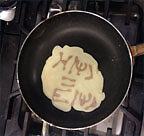Lecture series: Artificial Gauge Fields and Topology in Ultracold Atomic Gases, Dr. Yongping Zhang

Date
Location
Description
Lecture series: 22-23 April
Artificial Gauge Fields and Topology in Ultracold Atomic Gases
Dr. Yongping Zhang, Quantum Systems Unit, OIST
Ultracold atomic systems have proven to be remarkable systems, that can be used for simulating many of the fundamental models of many particle physics. However, as ultracold atoms are charge neutral, magnetic and electric fields do not have the same effect on them as they do on electrons or ions. One therefore has to introduce artificial gauge fields and recent progress in this area has seen the realization of many effects stemming from gauge field physics.
One particular example of this is that strong, artificial magnetic fields can induce interesting topological properties into ultracold atomic samples, such as the presence of the quantum Hall effect. However, due to the lack of transport possibilities in atom traps, the measurement of the Hall conductivity and the determination of the global Chern number are non-trivial. Therefore, the quest for preparing topologically nontrivial states and detect them experimentally in ultracold atoms gases is attracting growing attention and will be the focus of this lecture series.
Lecture 1: Synthetic Magnetic field and Electric field
Date: Wednesday, 22 April
Time: 10:00-12:00
Venue: C600-b, Lab2
In this lecture I will describe the current developments of generating artificial magnetic and electric fields in ultracold atomic gases in different environments, including homogenous condensates, trapped condensates and optical lattices. The observable physical phenomena range from the Hall effect, over vortex lattice formation to acceleration of atoms within the condensate.
Lecture 2: Artificial Spin-orbit Coupling
Date: Wednesday, 22 April
Time: 15:00-17:00
Venue: C600-b, Lab2
Based on my own research experience, I will demonstrate the experimental approach to generate spin-orbit coupling and describe the theoretical support for the experiments. General properties of the spin-orbit-coupled Bose-Einstein condensate such as phase diagrams, the tunability of parameters, and collective excitations will also be described in detail. I will highlight the relevant physics for the observation of the spin-Hall effect and the language of synthetic dimensions and the double-well structure in momentum space for such systems.
Finally, I will give a brief introduction into theoretical proposals to generate Rashba spin-orbit coupling by introducing the tripod scheme and the magnetic gradient pulse scheme. This will also include other experimental methods to produce the double-well structure in momentum space, such as two-leg ladders with nonzero magnetic flux and shaking optical lattices
Lecture 3: The Measurement of Topological Properties
Date: Thursday, 23 April
Time: 10:00-12:00
Venue: C600-b, Lab2
In this lecture I will highlight some recent experiments. They include the observation of the Aharanov-Bohm effect in momentum space, the realization of the Haldane model and the measurement of the Chern number. The key words here are Berry curvature, anomalous motion, shaken lattices, and closing and re-opening of a gap.
Attachments
Subscribe to the OIST Calendar: Right-click to download, then open in your calendar application.



